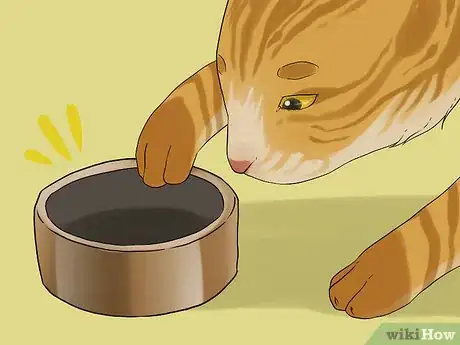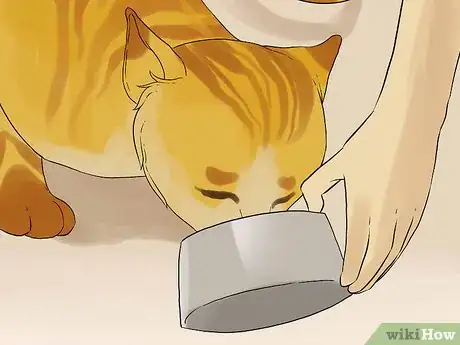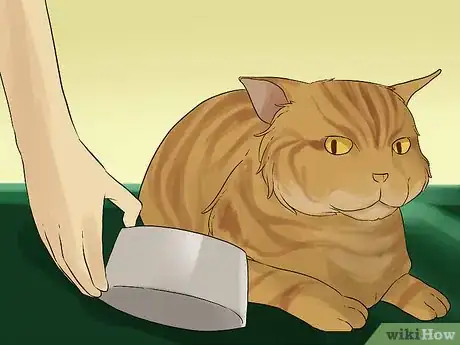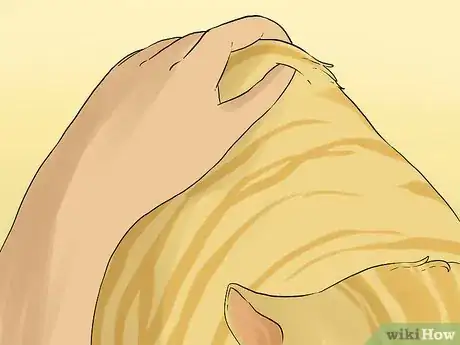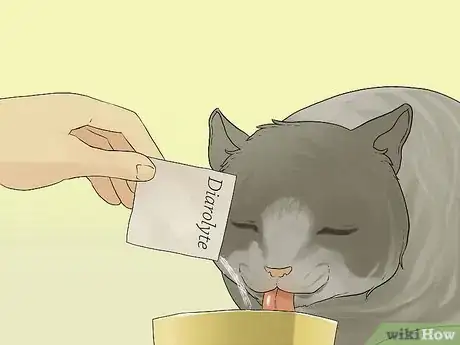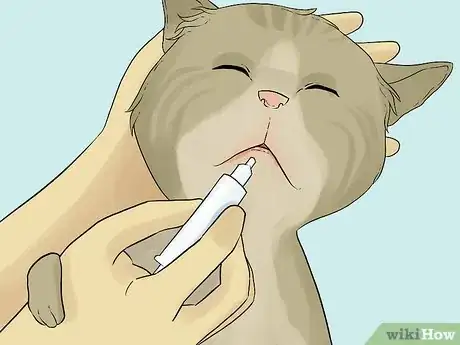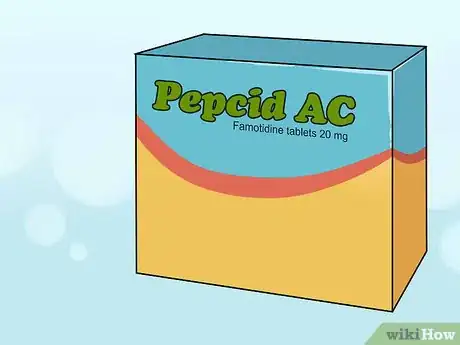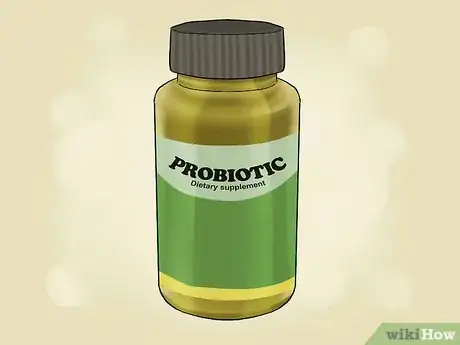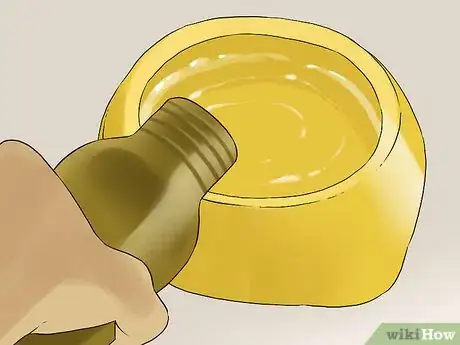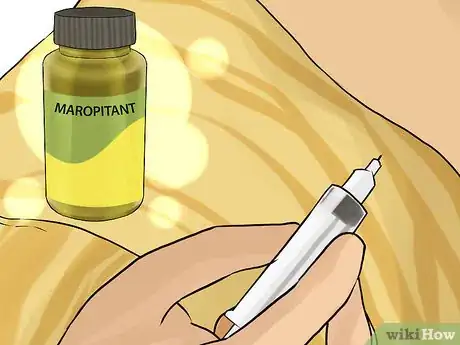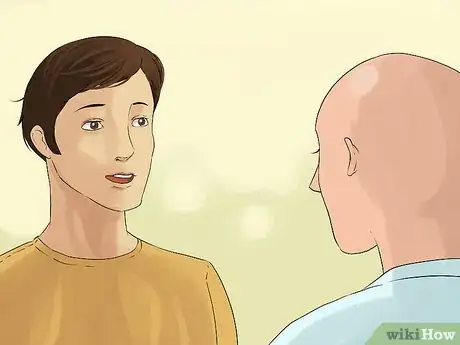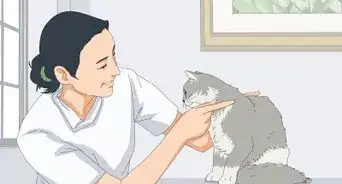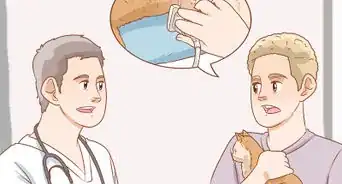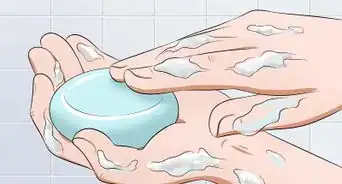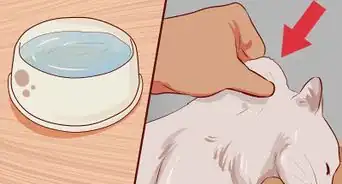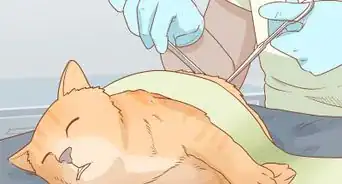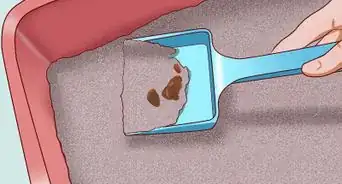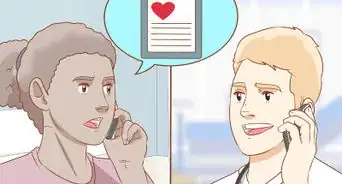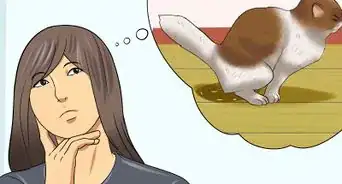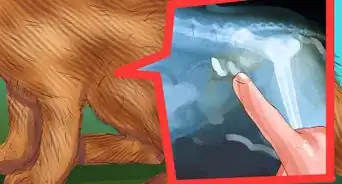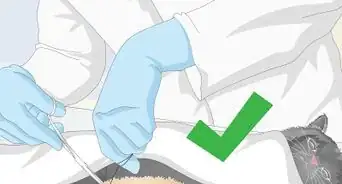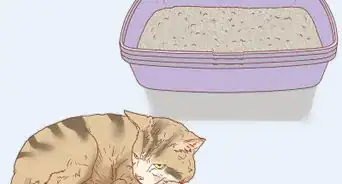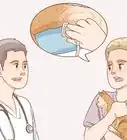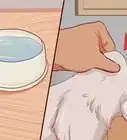This article was co-authored by Natalie Punt, DVM. Dr. Natalie Punt is a Veterinarian and the Founder and CEO of mPet- a smart phone app for pet owners to store, manage and transfer their pets medical records and health information. She specializes in small animal emergency and general medicine and veterinary practice economics. Dr. Punt holds a BS in Biochemistry and Molecular Biology from The University of California, Davis, an MS in Biochemistry from The University at Buffalo, and a DVM from Western University of Health Sciences.
There are 13 references cited in this article, which can be found at the bottom of the page.
This article has been viewed 89,631 times.
If your cat has an illness that is causing her to both vomit and have diarrhea, it is important to know what to do, and what not to do, to help her. Simple things like giving her the right food can make the difference between prolonged illness and a speedy recovery. When your cat is sick, it is important to keep her hydrated, know when (and when not) to feed her, and what medications to give her.
Steps
Deciding Whether to Feed or Not Feed Your Cat
-
1Do not feed your cat for 24 hours. Whether your cat is vomiting, has diarrhea, or is experiencing both, try to withhold food for 24 hours. However, you should provide your cat with clean drinking water as described above. Food in the stomach stimulates muscular contractions, which either then causes the stomach to contract and the cat to vomit,[1] or the bowel to spasm and push out diarrhea. Allowing the gut to "rest" for 24 hours, gives uncomplicated cases of sickness and diarrhea a chance to settle down.
- If the cat is still vomiting after 24 hours, then you should bring her to a vet.[2]
-
2Feed your cat bland food after the 24 hour period is up and she seems to be doing better. If your cat has stopped vomiting, but continues to have a small amount of diarrhea, you can begin to feed her small amounts of bland food.Advertisement
-
3Space out your cat’s meals. In order to allow your cat to digest, your should try to space out your cat’s meals so that she eats four to six small meals a day. This will help her stomach to adjust to the food after her illness.
-
4Transition your cat back to regular food. After your cat passes normal stool for 24 hours, start a gradual transition back to regular food over the course of two to three days.[5] This transition period allows bacteria in your cat’s gut to readjust to normal food. A typical transition may look like:
- Day 1: Feed ¾ bland diet and ¼ regular food.
- Day 2: Feed ½ bland diet and ½ regular food.
- Day 3: Feed ¼ bland diet and ¾ regular food.
- Day 4: Entirely back onto regular food.
Keeping Your Cat Hydrated
-
1Look for signs of dehydration by checking to see if your cat’s skin “tents”. When an animal is dehydrated, her skin loses its elasticity.[6] You can check to see if your cat is dehydrated by lifting the scruff off of her shoulders with your finger and thumb. If:
- The skin flops back into position immediately, your cat is hydrated.
- The skin remains peaked and slowly slides back down out of its tent-like position, your cat is dehydrated.
-
2Encourage your cat to drink if she can keep some fluids down. Provide clean fresh drinking water within reach of your cat’s bed.
- When they are ill, some cats prefer the taste of mineral water to tap water (because it has less chlorine in it and cats dislike the taste of chlorine), and will sip on mineral water even if they refuse tap water, so consider trying to give your cat different kinds of water.[7]
-
3Give your cat an electrolyte replacement solution. These solutions include Dioralyte or Pedialyte, which are made for humans but can be given to cats.[8] These solutions are mixed with water (normally 500 ml, but read the package) and are used to replenish lots electrolytes.
- Some cats don’t like the salty taste of these solutions. If this is the case with your cat, switch her back to water.
-
4Consider hydrating your cat with a syringe. If your cat is having a hard time drinking, and you happen to have a sterilized syringe at your house, give your cat water via syringe. Place the nozzle of the syringe behind your cat’s canine teeth. Press the plunger down slowly in order to give your cat time to swallow.
- An average sized cat, weighing between three to five kg, requires 180 to 300 ml of water a day to meet maintenance needs. Try giving your cat 5 to 10 ml of water every half an hour.[9]
-
5Seek medical care if your cat vomits every time she drinks water. For a cat with gastroenteritis, dehydration is a sign that fluid loss exceeds fluid gain and it is essential to redress this balance. If your cat vomits each time she drinks, or is unable to hold fluid down, then do not delay and seek urgent veterinary attention.
- A veterinarian will make a judgment call as to whether intravenous fluids need to be given to your cat based on your cat's demeanor (how alert or lethargic she is), how long she has been vomiting and expelling diarrhea, and the degree of dehydration. Intravenous fluids are given via a catheter which is placed in the vein in your cat's front leg. It can take between 24 and 48 hours to rehydrate your cat.[10]
Giving Your Cat Medications
-
1Consider giving your cat Famotidine. This medication is sold as Pepcid AC. Famotidine is an H2-antagonist that inhibits acid secretion in the stomach. It helps to soothe gastric ulcers and reduce inflammation when the stomach lining is inflamed. The drug should be used with caution in cats with heart disease because it can slow the heart rate, but this is usually only a problem when given intravenously.[11]
- The dose is 0.5 mg/kg once a day, by mouth. A 5 kg cat thus requires 2.5 mg a day.[12]
-
2Try giving your cat a probiotic supplement.[13] A probiotic designed for cats can speed up recovery from diarrhea. Wait to start the probiotic until your cat has stopped vomiting, then mix the probiotic with the bland food once a day. This helps to repopulate the gut with the correct bacteria that aids in digestion. Repopulating the gut helps feces to firm up more quickly.
- An appropriate cat probiotic is Fortiflora, which comes in a sachet. It can be mixed in food and given to your cat once a day for five days.
-
3Try Kaolin and Pectin (Kaopectate). Kaolin and pectin absorb toxins produced in the gut, and also line the gut wall to provide a protective barrier. Its effectiveness is questionable, but some animals do seem to benefit, so talk to your vet before giving your cat this over-the-counter medication.[14]
-
4Get a prescription for Maropitant. Maropitant can help to stop your cat from vomiting. The medication can be given by injection and is highly effective at relieving nausea and preventing vomiting because the drug acts on the brain and switches off the vomiting center.[15]
-
5Talk to your vet about atropine. Another prescription medication is atropine. Atropine is an antispasmodic which causes the bowel to relax, and then as the effects of the atropine wear off, the bowel reverts back to a normal action.
- The benefit of giving atropine to cats with diarrhea is controversial. Some veterinarians argue that the toxins are better "out than in" and that antispasmodics such as atropine, cause the toxins to be retained in the bowel. The counter argument is that sometimes the bowel becomes sensitive because of diarrhea that it is constantly in spasm.
Expert Q&A
-
QuestionWhat would cause a cat to vomit and have diarrhea?
 Natalie Punt, DVMDr. Natalie Punt is a Veterinarian and the Founder and CEO of mPet- a smart phone app for pet owners to store, manage and transfer their pets medical records and health information. She specializes in small animal emergency and general medicine and veterinary practice economics. Dr. Punt holds a BS in Biochemistry and Molecular Biology from The University of California, Davis, an MS in Biochemistry from The University at Buffalo, and a DVM from Western University of Health Sciences.
Natalie Punt, DVMDr. Natalie Punt is a Veterinarian and the Founder and CEO of mPet- a smart phone app for pet owners to store, manage and transfer their pets medical records and health information. She specializes in small animal emergency and general medicine and veterinary practice economics. Dr. Punt holds a BS in Biochemistry and Molecular Biology from The University of California, Davis, an MS in Biochemistry from The University at Buffalo, and a DVM from Western University of Health Sciences.
Veterinarian The cat might have an upset stomach, IBD, a GI-related cancer, pancreatitis, or a parasitic infection. Allergies, diabetes, kidney disease, or liver disease could also be a cause.
The cat might have an upset stomach, IBD, a GI-related cancer, pancreatitis, or a parasitic infection. Allergies, diabetes, kidney disease, or liver disease could also be a cause. -
QuestionHow do I know what's wrong with my cat?
 Natalie Punt, DVMDr. Natalie Punt is a Veterinarian and the Founder and CEO of mPet- a smart phone app for pet owners to store, manage and transfer their pets medical records and health information. She specializes in small animal emergency and general medicine and veterinary practice economics. Dr. Punt holds a BS in Biochemistry and Molecular Biology from The University of California, Davis, an MS in Biochemistry from The University at Buffalo, and a DVM from Western University of Health Sciences.
Natalie Punt, DVMDr. Natalie Punt is a Veterinarian and the Founder and CEO of mPet- a smart phone app for pet owners to store, manage and transfer their pets medical records and health information. She specializes in small animal emergency and general medicine and veterinary practice economics. Dr. Punt holds a BS in Biochemistry and Molecular Biology from The University of California, Davis, an MS in Biochemistry from The University at Buffalo, and a DVM from Western University of Health Sciences.
Veterinarian Take your cat to the vet, who can perform a variety of different tests to see what the issue is. For instance, the vet might do PICO analysis work for intestinal parasites or check electrolytes and blood glucose levels to detect diabetes.
Take your cat to the vet, who can perform a variety of different tests to see what the issue is. For instance, the vet might do PICO analysis work for intestinal parasites or check electrolytes and blood glucose levels to detect diabetes. -
QuestionWhat should I do if there is not a vet nearby?
 Community AnswerYou should call an emergency vet and see if they are open, and search online for the closest vet to you.
Community AnswerYou should call an emergency vet and see if they are open, and search online for the closest vet to you.
References
- ↑ http://www.pethealthnetwork.com/cat-health/cat-diseases-conditions-a-z/cat-diarrhea-when-it-serious-and-how-do-i-stop-it
- ↑ https://www.bluecross.org.uk/pet-advice/caring-your-sick-cat
- ↑ https://www.preventivevet.com/dogs/dog-or-cat-has-diarrhea-what-you-can-do-at-home
- ↑ Clinical Medicine in the Dog and Cat. Michael Schaer. Manson Publishing.
- ↑ https://vcahospitals.com/know-your-pet/diarrhea-in-cats
- ↑ https://pets.webmd.com/cats/guide/dehydration-cats#1
- ↑ https://vetfocus.royalcanin.com/en/doc-10.html
- ↑ https://www.cat-world.com.au/pedialyte-for-cats.html
- ↑ Clinical Medicine in the Dog and Cat. Michael Schaer. Manson Publishing.
- ↑ https://www.aaha.org/globalassets/02-guidelines/fluid-therapy/fluid_therapy_guidelines.pdf
- ↑ https://www.petmd.com/pet-medication/famotidine
- ↑ Clinical Medicine in the Dog and Cat. Michael Schaer. Manson Publishing.
- ↑ Natalie Punt, DVM. Veterinarian. Expert Interview. 19 August 2021.
- ↑ https://www.preventivevet.com/dogs/dog-or-cat-has-diarrhea-what-you-can-do-at-home
- ↑ https://vcahospitals.com/know-your-pet/maropitant-citrate
